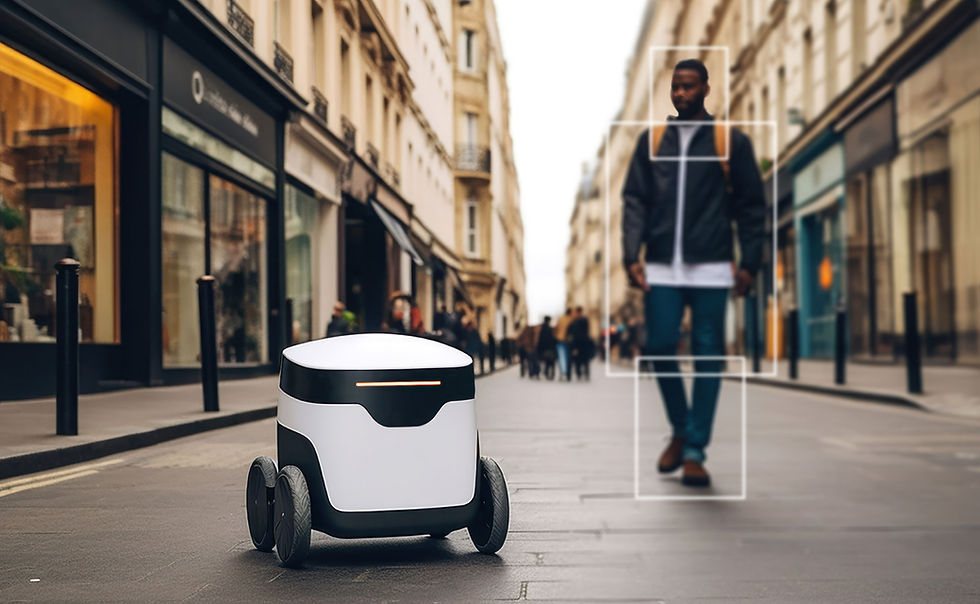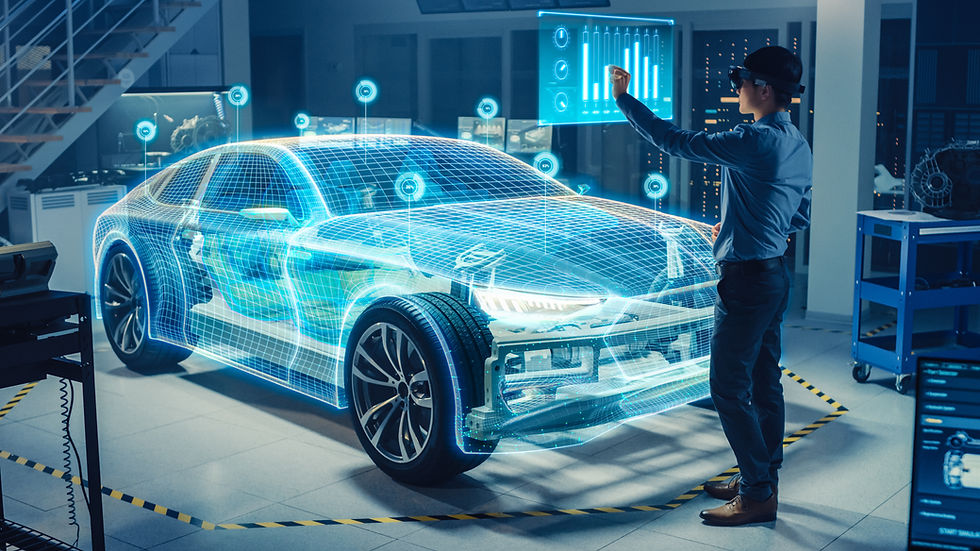Harmonizing Interactions: Generative AI and Human-Machine Interaction in Automobiles
- Shreshth Virmani
- Aug 23, 2023
- 2 min read

In the realm of automotive innovation, a paradigm shift is underway—Generative Artificial Intelligence (AI) is shaping the landscape of Human-Machine Interaction (HMI). This article embarks on a journey through the world of vehicular communication, revealing how the fusion of cutting-edge technology and intuitive understanding is redefining the way we communicate with our cars. From natural language interfaces to emotion recognition, Generative AI is nurturing a future where vehicles become intuitive companions, seamlessly bridging the gap between human desires and automotive functionality.
Introduction: Generative AI's Influence on Human-Machine Interaction
Human-Machine Interaction has evolved into a realm empowered by AI. As consumer expectations evolve and the automotive experience transcends conventional norms, technology becomes the bridge between drivers and their vehicles. Generative AI collaborates with engineers, designers, and user experience experts, orchestrating a harmonious symphony of communication that transforms the way we engage with our automobiles.
Natural Language Interfaces for In-Car Systems: Conversing with Your Car
Conversations come to life with AI fluency. Generative AI interprets natural language commands, allowing drivers to communicate with in-car systems effortlessly. These AI-powered interfaces make navigation, entertainment, and climate control as simple as having a chat.
Gesture and Emotion Recognition for User Interaction: Non-Verbal Dialogues
Non-verbal cues are decoded by AI perception. Generative AI recognizes gestures and reads driver emotions to enhance interaction. This intuitive understanding transforms vehicles into attentive companions that respond to your feelings and commands.
Interior Lighting and Ambiance Customization: Personalizing the Experience
Ambiance becomes an artistic canvas with AI creativity. Generative AI designs customizable lighting scenarios that align with driver preferences and moods. These ambient experiences transform vehicles into immersive sanctuaries.
User Experience Enhancement: Elevating Convenience
Generative AI enriches user experiences. By analyzing data on driver behavior, preferences, and routines, AI tailors in-car settings to individual needs. This personalization makes each drive a tailored and comfortable journey.
Entertainment Integration: Elevating Entertainment
Generative AI harmonizes entertainment choices. By analyzing music preferences, streaming history, and mood recognition, AI suggests entertainment options that match the driver's ambiance and mood.
Technology Company's Role: Enhancing HMI Integration
Technology companies play a pivotal role in this evolution. They integrate Generative AI into infotainment systems, enhancing voice recognition and user understanding capabilities. This partnership ensures that AI becomes an intuitive companion, elevating the driving experience.
Safety Augmentation: Ensuring Distraction-Free Interaction
Generative AI enhances safety protocols. By recognizing driver gestures and emotions, AI-generated insights ensure that interactions are distraction-free, prioritizing safety on the road.
Ethical Considerations: Guiding AI's Interaction
As Generative AI transforms HMI, ethical considerations arise. Balancing AI-driven responses with driver preferences, addressing concerns of data privacy, and ensuring that AI interactions uphold ethical guidelines are fundamental.
Conclusion: Crafting Intuitive Vehicular Conversations
Generative AI's impact on Human-Machine Interaction is akin to composing a symphony of intuitive dialogues. As natural language interfaces, gesture recognition, and ambiance customization converge, they nurture a future where vehicles engage with occupants in a language that transcends technology, creating memorable and seamless interactions.




Comments